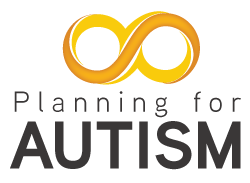Feel free to speed-date our resources and use them as a jumping-off point for your own search. Knowing what current literature says will help you make good planning decisions, and come in very handy when you apply for grant funding.
Making Room for Inclusion
Author(s): Bohanon, T.
Bohanon discusses accommodating environments when sensory programs may not be possible. Despite interest from the communities she has served, numbers have been consistently low. Usually one to two families attend the monthly program. Recently, Akron-Summit County, Ohio, Public Library, where she worked, made the decision to discontinue these storytimes. When sensory programming may not be feasible– whether because of low attendance, inadequate staffing, or lack of administrative support–they can take steps in all programming to create a welcoming environment for those with different abilities. In doing so, they are practicing inclusion despite an absence of dedicated programs for these families. Another way to be more inclusive is to relax programming age restrictions to “family” or “all ages.”
Neurodiversity at Work: A Biopsychosocial Model and the Impact on Working Adults
Author(s): Doyle, N.
The term neurodiversity is defined and discussed from the perspectives of neuroscience, psychology and campaigners with lived experience, illustrating the development of aetiological theories for included neurodevelopmental disorders. The emerging discourse is discussed with relevance to adults, social inclusion, occupational performance and the legislative obligations of organizations.
Can Sensory Gallery Guides for Children with Sensory Processing Challenges Improve Their Museum Experience?
Author(s): Fletcher, T., Blake, A., & Shelffo, K
This research explored whether museum gallery guides for sensory “avoiders” and “seekers” could be utilized with children with sensory sensitivities to help them prepare for and participate in museum experiences. Results showed combining both sensory “avoiding” and “seeking” gallery guides into one sensory friendly gallery guide can have a positive impact on a child’s museum experience. To achieve success, sensory gallery guides must be developmentally appropriate, provide structure for a gallery visit, facilitate active thinking, looking, and discussion, and showcase interesting gallery spaces providing a variety of sensory-rich objects.
Enhancing Relaxed Performance: Evaluating the Autism Arts Festival
Author(s): Fletcher-Watson, B., & May, S.
“Relaxed performances” allow theater spectators to experience a non-judgmental environment, featuring adjustments to make them more accessible to a range of audiences. The Autism Arts Festival attempted to develop the idea of “relaxed performances” further to create an entirely autism-friendly festival in Canterbury. The organizers developed a suite of features to make the festival more accessible, and the suite as a whole was effective at increasing the accessibility of the festival. Moreover, discussions with performers indicate that the festival, as an ‘autistic space,’ was conducive to both a sense of community solidarity and engagement with the politics of neurodiversity.
Effects of Sensory Processing Patterns on Social Skills and Problem Behaviors
Author(s): Ismael, N.
The purpose of this study was to assess the effectiveness of a Social Story(TM) intervention in teaching a young child with hyperlexia to appropriately obtain the attention of his peers.
Sesame Place® becomes the First Theme Park in the World to be Designated as a Certified Autism Center
Author(s): Katz, B.
The article discusses the completion of a staff-wide autism sensitivity and awareness training of the International Board of Credentialing and Continuing Education Standards (IBCCES). It states that the certification training aligns with National Autism Awareness Month on April 28, 2018. It also notes that the training helps ensure the development of communication, social skills, and emotional awareness in autism.
A Recipe for Session Success: Promoting OT Through Universal Design for Learning and Text Analysis
Author(s): Marlin, A., Fletcher, T., & Garcia, N.
Occupational therapy practitioners (OTPs) frequently work with clients who face communication and participation challenges. Universal design for learning (UDL) principles and text-analysis tools can help clients navigate situations where effective communication is essential. This article describes how text analysis and UDL concepts are successfully embedded in the creation and curriculum design of our therapy team’s program: Planning for Autism in Communities and Schools, which aims to meet the needs of young adults, age 14 and older, with autism spectrum disorder (ASD) through a sustainable approach to promoting participation.
Caregivers’ Perspectives on the Sensory Environment and Participation in Daily Activities of Children With Autism Spectrum Disorder
Author(s): Pfeiffer, B., Coster, W., Snethen, G., Derstine, M., Piller, A., & Tucker, C.
Researchers interviewed 34 caregivers of children with ASD ages 3-7 yr. Results strongly suggest that parents and caregivers were pivotal in enabling participation for their children through the implementation of specific strategies and a parental decision-making process. The decision-making process considered the amount of effort necessary to support participation and whether participation in a given activity was perceived as essential or nonessential. Strategies, either directly related to the sensory factors of the environment or focused on reducing behavioral responses associated with sensory factors, enabled participation and reduced the effort required to support the child’s participation. This study contains important considerations to enhance participation in the home and community environments for autistic children.
How to Perform Your Own Search
Author(s): John Humphrey
Learn how to use free and paid databases to find your own resources thanks to the expertise of Texas Woman’s University Health Sciences Librarian, John Humphrey.

